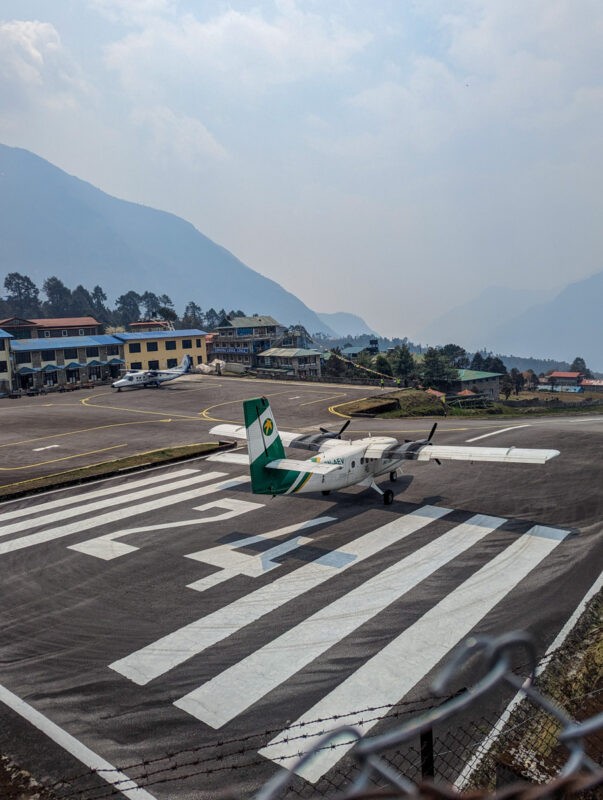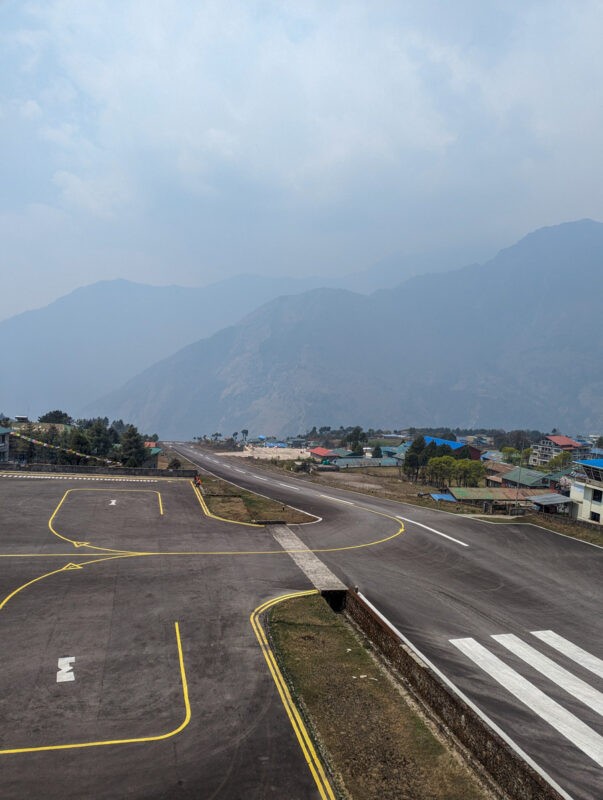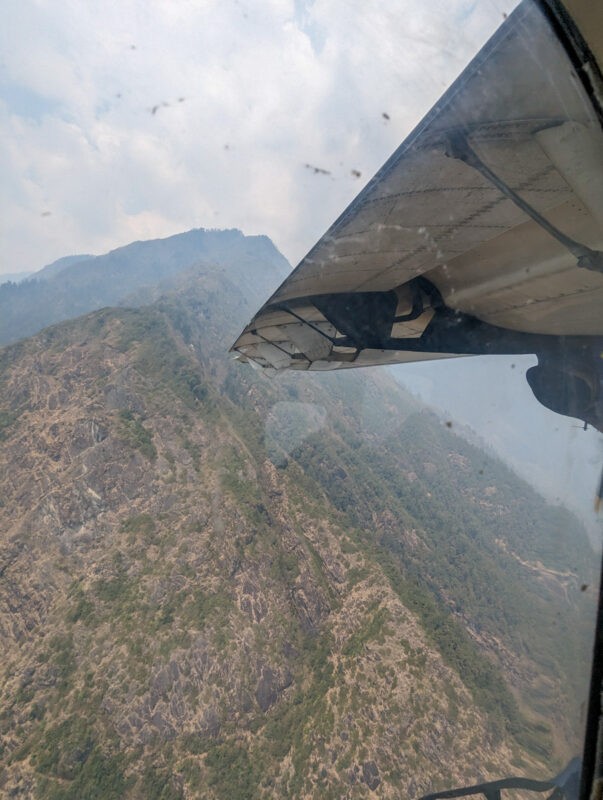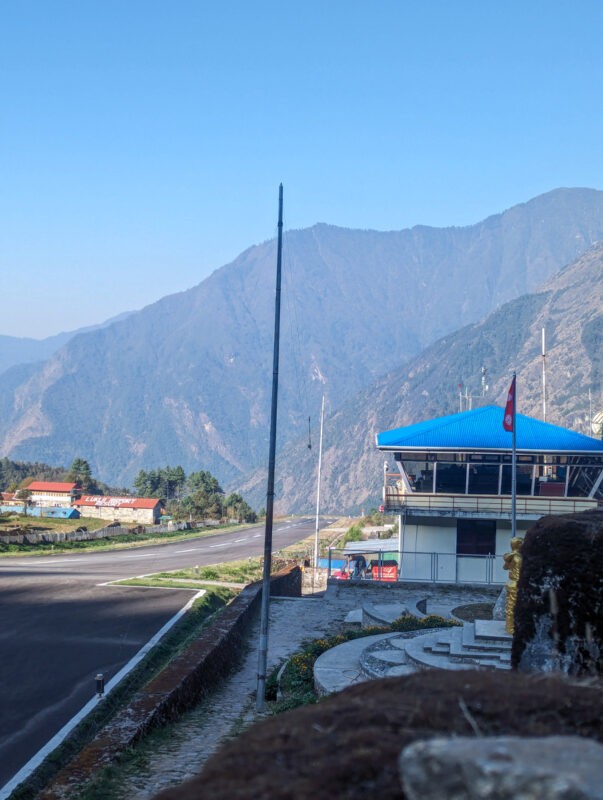Is Lukla airport in Nepal safe?
If you Google “world’s most dangerous airport”, you’ll be greeted with a series of listicles featuring airports around the world, and a few articles about one in particular – Lukla Airport in Nepal.
This airport – the official name is Tenzing-Hillary Airport after the first two men to climb Mount Everest – sits in the Himalayan mountains and has a runway of just 520 metres.
In fact, the runway’s so short that it needs to be tilted to 45 degrees so planes can stop efficiently – or speed up enough when taking off.
If planes don’t slow down enough, the runway leads right into a cliff, and on the other side, there’s a sheer drop into the mountains.
So, why would anybody go to Lukla Airport?
Well, it’s actually one of Nepal’s busiest airports, with around 40,000 tourists passing through each year. The reason? It’s the jumping point for the Everest Base Camp hike.
I don’t like flying.
Despite having been to 73 countries around the world and being a full-time travel blogger, I am actively terrified of being up in the air on a plane. But, hiking to Everest Base Camp was high on my bucket list, and I’m never one to let fear stop me from doing something I’ve always done.
So, I gathered my nerves and flew out to Kathmandu, where we transferred to Ramechhap and took “the world’s most dangerous flight”.
The statistics: is Lukla airport dangerous?

Before my trip, I was trying to find every reassurance possible about the safety of Lukla Airport.
And while it’s definitely a hairy flight, the statistics are promising!
Why is Lukla airport so dangerous?

So, why is Lukla airport so dangerous?
The airport is often considered to be the world’s most dangerous due to its position at the end of the cliff and short runway; it’s only 527 metres long, whereas most airports of similar size have runway lengths of 2500 metres long.
On one end of the runway, there’s a sheer drop, and on the other side, there’s a cliff – so there’s no margin for error.
The runway is even tilted at an 11.7% gradient to help planes slow down quicker!
The thin air at altitude and temperamental mountain weather also add to the potential dangers at the airport.
Is Lukla airport safe? Reasons why it’s safer than you might think

I decided to dig into the Lukla airport crash statistics before my flight.
There has been the occasional plane crash at Lukla Airport, most of which are non-commercial flights.
But the crash ratio isn’t as high as some other airports – in fact, I think that there are plenty of other dangerous airports in Nepal.
So, if you’re asking “is Lukla airport safe?” the answer is “safer than many”!
In fact, there’s only been one fatal commercial crash in the last 20 years. 18 hikers and crew members were killed in a crash in 2008.
This is largely due to the Lukla Airport safety measures – pilots need special training to land here and planes are cancelled when the weather is bad – in fact, 50% of planes are cancelled because the weather is bad enough half of the time!
But, up to 40,000 tourists pass through this airport every year to hike Everest Base Camp and there are usually 15 landings every single day in hiking peak season.
So while the weather, altitude and short runway cause Lukla Airport to feel dangerous, the incident rate is relatively low and it largely is safe.
Where do the flights leave from?

These days, flights to Lukla Airport nearly always depart from Ramechhap, a four hour drive from Kathmandu (without traffic).
I heard two reasons why this is the case:
- There’s too much traffic at Kathmandu airport to accommodate hikers in high season.
- The weather is so variable in Lukla that sometimes it can change dramatically during the space of a flight from Kathmandu.
The good news? The Ramechhap to Lukla flight takes just 18 minutes.
My experience at the “world’s most dangerous” airport in Nepal

As we had to drive all the way to Ramechhap for an early morning flight, we had to depart at the painful time of 2:30am.
I hoped I’d be able to get some shut-eye on the bus, but alas driving around the rural Nepali roads was akin to being whizzed in a blender – it was far too rough to do anything other than pointedly stare out of the window!
We stopped around 2/3s of the way for tea and watched the sunrise over paddy fields.
Ramechhap was a hive of activity when we arrived. Planes had been cancelled the day before, which meant that not only was our group trying to board their scheduled flights, but people from previous days were attempting to squeeze on as well.
I’m very glad that we chose to hike Everest Base Camp with a guide, and this is just one of the ways that they helped a lot. We didn’t have to lift a finger when it came to organising our flights; they sorted everything out for us.
While we arrived at around 6:30am, we didn’t actually end up boarding a plane until 10:00am. This is just part of the package here – there aren’t really scheduled times and everyone has to wait, so I’d recommend grabbing some food and tea and relaxing!
At around 9:30am, we were told to go through the airport process – we secured our boarding passes, had our bags weighed (baggage limit is 15kg per person) and scanned, and we were taken to the waiting area.
This is like being at a us stop – every 10 minutes, a plane will be boarded up and take off! There are three airlines that ply the route – we went with Sita Airways.
We waited around another half an hour before our plane number was called out.
However, just as we were getting onto our plane, we were told to stop. “The weather’s changing in Lukla” our air hostess explained. “Sorry”, she told us, “we’ll have to delay this flight”.
Disappointed, but also glad that they are hasty to cancel when necessary, we walked back to the waiting area. But, after we’d taken a few steps, we were called back. “We can fit your flight in before the weather changes after all”!
This wasn’t great for my anxiety, but I was happy to be getting the flight over and done with (ultimately flights were cancelled after for two days, which would have very much hampered our plans!).
So, we boarded the tiny plane and the pilot hastily took off.
The take off from Ramechhap was as similar as any propellor plane take-off – we gathered momentum on the tarmac before hurling forward and taking off.
We soared over the bright green fields, mountains looming in the background. “Expect some light turbulence”, our air hostess told us with a chuckle.
Light was a bit of an understatement, and a few people in the group noted that it was much rougher than they thought it would be. In all honesty, I’d worked it up a lot in my head that it was about the same as I thought it would be.
But the locals, who are used to these flights, weren’t at all bothered. “I’ve taken this flight about 200 times” Ram, our guide told me. “This is very light turbulence, don’t worry!”.
This was backed up by the air hostess who sat looking at her phone for the whole time we were airborne. “I do this flight ten times per day,” she told me when we landed. “I’m used to it now!”.
Upon landing in Ramechhap, I had to close my eyes, but heard a couple of gasps from others on the plane – and I did film so I could watch it back later.
The cliff advances quickly, and it seems impossible that the plane will stop in time – but it does, it’s what these planes are made to do, and like the overwhelming majority of flights to Lukla, we landed safely 18 minutes after departing Ramechhap.
And I’ve got to do it all over again in 10 days… I thought as we sat on the tarmac.
The return flight

After 11 days of hiking to Everest Base Camp and back to Lukla, we waited at The Nest tearoom for our departing flight.
The weather was fairly still today, with no whispers of cancellations on the horizon.
Our experience was much more seamless – The Nest is right by the airport, so we went over when it was time to check in (our guides arranged this, although I believe if you’re hiking independently the tea house owner can assist), did the usual airport procedures and boarded the flight.
As we took off, the plane gained extra speed thanks to the fact it was plunging downhill – and, when it took flight at the end of the runway, everyone cheered. Again, I couldn’t look myself, although did catch it on video!
There was less turbulence on this day, and I did manage to enjoy some of the spectacular views as we flew away from the Himalayan highlands.
Then, it was just a six-hour sweaty bus ride back to Kathmandu!
So, is the Lukla flight safe?
While it feels a bit hair-raising, the flight to Lukla is safe when you analyse the statistics. The airport definitely feels nerve-wracking, but as it’s a must-do to get to the EBC hike, if it’s on your bucket list it’s necessary!

